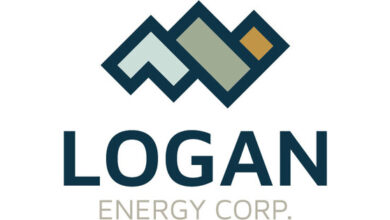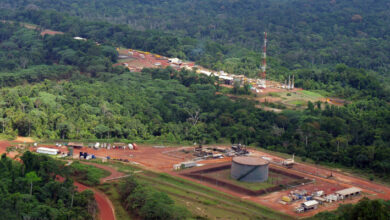People issues contribute to project delays, cost overruns
By Matt Smith, Air Energi
Australia’s natural gas boom has prompted forecasts that it will overtake Qatar as the world’s biggest LNG exporter by 2020. The Australasian region has witnessed an unprecedented level of LNG project investment, upwards of AUS $200 billion in capital expenditure. Yet, current projects in Australia have encountered challenges, with cost overruns, workforce issues and fierce competition for resources triggering project delays and even cancellations. With a second wave of LNG projects in Australasia still a possibility, there is increasing concern that workforce costs and continued shortages could contribute to further project delays or cancellations.
With the industry’s project-based structure highly dependent on a contingent workforce, the underlying causes of many issues encountered in the LNG projects are people related. It is possible to identify the highest risks that must be considered for any given project, while the lessons learned thus far in Australia’s LNG sector can be used to develop solutions that help bridge the silos that typically exist in multibillion dollar projects.
People risk and root causes

People risk mitigation is not a new way of looking at manpower services, but in the oil and gas industry, it has not been vigorously addressed. Unlike technical risk and safety, the people element has proved much harder to manage and quantify.
There are more than 50 types of risk connected with a contingent workforce during the execution of a major project. However, there are two root causes – the ongoing skills shortage and an aging workforce – both of which present a similar risk to the industry in terms of the recruitment and retention of permanent and contract staff. Getting the right people at the right time, in the right place and for the right cost, is a key challenge.
Skills shortages in Australia, for example, are anticipated across the majority of professional and managerial roles, with the greatest shortage forecast to occur in 2015 and 2016 (Table 1). An acute skills shortage means a lack of domestic talent, forcing companies to consider international avenues for recruitment. However, this is not always a viable solution since the skills shortage is a global issue.
Figure 1 shows that more than 50% of the LNG workforce holds 31 years of experience or more, whereas only 3% have under 10 years of experience in their field. This not only indicates a difficulty finding new candidates with the necessary skills and experience but also hints at the aging of the workforce.
Critical issue
Although the oil and gas industry has been aware of the aging workforce for some time, it still remains one of the key obstacles to obtaining and retaining the skills required for projects. The industry’s failure to act collectively in addressing this trend, combined with typical approaches to recruitment and retention of experienced professionals (i.e., increasing pay), are false economy. Increased labor costs drive up project costs, resulting in continued price pressure in the supply chain. Downward pressure on price impacts the level of investment in training, which is often one of the first areas to see cuts.

A report by Air Energi and the Queensland University of Technology (QUT) confirmed the attraction and retention of talent as a critical issue. It also shows that the impact of people-related issues on project schedules and costs is significant in capital-intensive environments.
Identifying and reducing workforce risks
Air Energi partnered with QUT to develop a comprehensive method of identifying and reducing workforce risks as they relate to projects involving a contingent workforce. The research involved identifying different risks connected with a contingent workforce during the exploration, execution and demobilization phases of a major LNG project. These risks are broadly categorized into six core areas:
• Project appeal – includes factors such as project duration, remuneration and benefits, location, employer brand of operating company, roster, and the phase of the project;
• Recruitment – the ability to access and secure the required talent in a timely and systematic fashion;
• Onboarding and induction – can include everything from general orientation and introductions to transmission of the company culture and “the way we do things”;
• Retention – important for many reasons, such as justifying training expenses, preserving knowledge, and building expertise;
• Reassignment and demobilization – presents the highest risk in terms of resources and time invested and the most fragile stage due to a reliance on contract workers to effectively complete a project; and
• Compliance – includes complying with the legal requirements of the location and country but also internal organizational policies.
The research is based on in-depth interviews with industry experts from operations, HR, project management, advisory functions and contractors. The report findings have enabled the development of a comprehensive tool for identifying and analyzing the potential workforce-related risks for projects. This tool will be available in Q2 2014.
Importance of “project appeal”
Perhaps one of the most surprising findings of the research is just how much emphasis oil and gas professionals place on the attractiveness of a project itself. The appeal of the project location, for example, depends on whether a location is considered safe, if taxation arrangements are favorable, and whether there is a high number of competing projects in the same area.
Having a positive company brand and being known as an attractive employer is also important, as is the ability to offer long contracts, appealing rosters, substantial benefits, competitive rates and an exciting phase in the project lifecycle. In addition, it is important to be able to offer an appealing mix of contractors and staff on the project (i.e., knowledge transfer being the vital outcome), as well as a positive work environment where there are stimulating opportunities and tasks.
Unsurprisingly, it is difficult to attract the skills, experience and temperaments needed if a project is deemed unattractive by prospective employees. An inability to get the best people and a lack of required skills to meet project requirements will almost inevitably lead to project delays.
With the major overarching risk in the oil and gas industry being unable to deliver a project on time and within budget, it is essential that businesses today think differently about identifying and managing their people-related risks, particularly in large and complex projects. This will be vital to the future development of projects not just in Australasia, but any market seeing significant demands worldwide.
Click here to download a copy of the Air Energi/QUT report, “Workforce Related Project Risks.”




